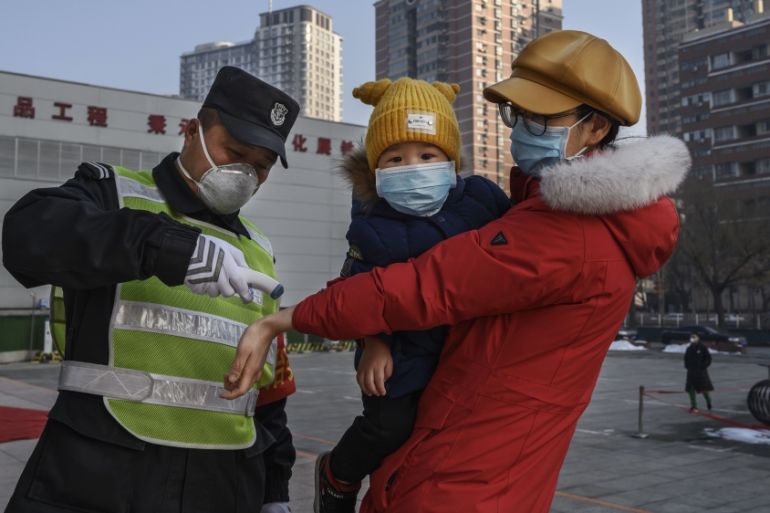COVID-19: WHO names disease caused by new coronavirus
Global health agency says name picked to avoid references to specific location, animal species or group of people.

The World Health Organization (WHO) has announced that “COVID-19” will now be the official name of the disease caused by the new coronavirus from China, saying the disease represented a “very grave threat” for the world but there was a “realistic chance” of stopping it.
“We now have a name for the disease and it’s ‘COVID-19’,” WHO chief Tedros Adhanom Ghebreyesus told journalists in the Swiss city of Geneva on Tuesday. The new strain of the coronavirus that causes COVID-19 was named severe acute respiratory syndrome coronavirus 2 (SARS-CoV-2).
Keep reading
list of 3 itemsWhat happens if you catch the new coronavirus?
Coronavirus: All you need to know about symptoms and risks
The announcement came as the death toll in mainland China has now reached more than 1,000, after 108 people died from the virus on Monday – the highest daily toll since the outbreak began late last year in the central Chinese city of Wuhan.
Tedros said that “CO” stands for “corona”, “VI” for “virus” and “D” for “disease”, while “19” was for the year, as the outbreak was first identified on December 31.
The WHO chief said the name had been chosen to avoid references to a specific geographical location, animal species or group of people in line with international recommendations for naming aimed at preventing stigmatisation.
🚨 BREAKING 🚨
"We now have a name for the #2019nCoV disease:
COVID-19.
I’ll spell it: C-O-V-I-D hyphen one nine – COVID-19"
–@DrTedros #COVID19 pic.twitter.com/Kh0wx2qfzk
— World Health Organization (WHO) (@WHO) February 11, 2020
Referring to some governments’ counterterrorism measures, Tedros said: “To be honest, a virus is more powerful in creating political, economic and social upheaval than any terrorist attack.
“A virus can have more powerful consequences than any terrorist action. If the world doesn’t want to wake up and consider this enemy virus as Public Enemy Number 1, I don’t think we will learn from our lessons,” Tedros said.
The agency has appealed for sharing of virus samples and speeding up research into drugs and vaccines.
“The first vaccine could be ready in 18 months. So, we have to do everything today using the available weapons to fight this virus while preparing for the long term using the preparations for the vaccines,” Tedros said.
“If we invest now … we have a realistic chance of stopping this outbreak.”
Stigmatisation
The agency had earlier given the virus the temporary name of “2019-nCoV acute respiratory disease” and China’s National Health Commission this week said it was temporarily calling it “novel coronavirus pneumonia” or NCP.
Under a set of guidelines issued in 2015, WHO advises against using place names such as Ebola and Zika – where those diseases were first identified and which are now inevitably linked to them in the public mind.
More general names such as “Middle East Respiratory Syndrome” or “Spanish flu” are also now avoided as they can stigmatise entire regions or ethnic groups.
According to China’s National Health Commission, the total number of deaths on the mainland due to the virus as of Tuesday was 1,016. Meanwhile, 42,638 infections have been reported. The vast majority of deaths and infections are in Wuhan and the surrounding Hubei province.
Two deaths have been recorded outside mainland China – one in Hong Kong and one in the Philippines.
At least 25 countries have confirmed cases and several nations have evacuated their citizens from Hubei.